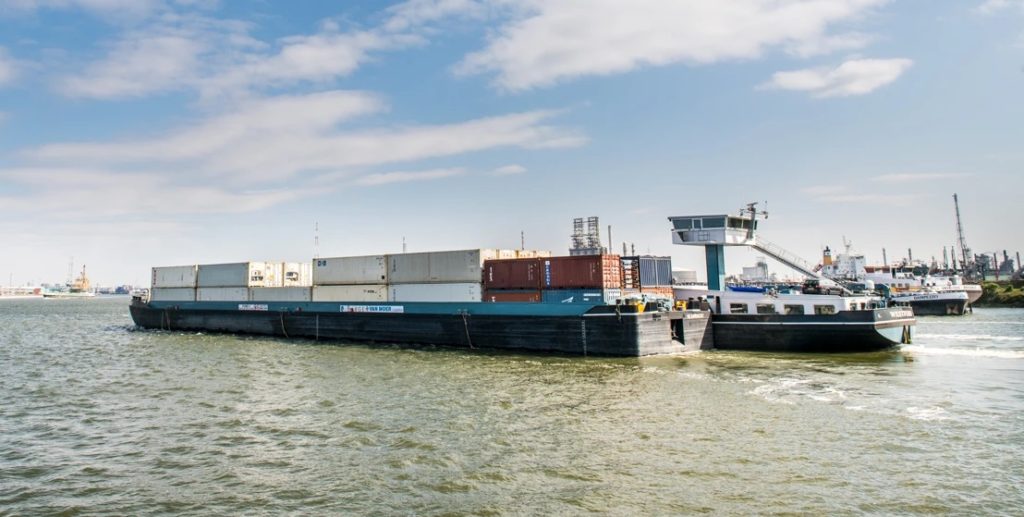One of the answers to cut the number of lorries on the roads is to replace them with barges on inland waterways. And one of the ways to make waterway traffic more competitive is autonomous shipping.
Simple, and an area where research being carried out by the port of Antwerp and the city’s university is showing promise. And the key is sonar, or the method bats use to find their way around.
“In 2019, over 42% of all goods entered or left the port of Antwerp via inland waterways,” said Annick De Ridder, Antwerp city councillor for the port.
“In other words, inland shipping is crucial if we want to ensure the accessibility of our city and our port. By focusing on technology such as unmanned navigation, we want to further increase both the market share and the competitiveness of inland shipping.”
Working on that technology is the job of the university of Antwerp.
“Unmanned vessels can lead to substantial cost savings, as well as provide an answer to our increasing traffic congestion problems and the rising costs of road transport,” said Svetlana Samsonova, liaison officer for the university. “Smart vessels definitely have a part to play in the multimodal transport approach that the Port of Antwerp wants to help develop further.”
At the sharp end of the technological research is Professor Jan Steckel, in charge of the CoSys-Lab, a research group in the university’s Faculty of Applied Engineering. His task was to develop a sensor system that can deal with the sometimes harsh conditions of the port environment.
“In order to achieve fully autonomous navigation, constant monitoring of the ship's surroundings is absolutely crucial,” he said. “Cameras can be used, of course, but when visibility is poor – due to dust, water spray, mud, smoke or fog – they don't work properly.”
Sonar, on the other hand, handles those conditions perfectly, and the proof was readily available.
“We drew our inspiration from the way bats use echolocation. They emit sound waves, and when those waves hit objects, the bats hear the echoes of the collisions, allowing them to avoid obstacles flawlessly.”
The project CoSys-Lab involved creating a 3D sonar device with 32 waterproof microphones. The device, known as eRTIS – embedded Real Time Imaging Sonar – sends out and picks up echoes of its surroundings, which a computer translates in real time into a three-dimensional map of the surrounding area.
“The information is transmitted in real time because if there are any delays, the ship could crash into something. The Imaging Sonar part refers to reflected sound waves hitting the sensors to create a picture of the surroundings.”
The device underwent testing at the end of last year on board the Tuimelaar, one of the Port Authority’s test vessels, with positive results. A follow-up project will take place this year.
Alan Hope
The Brussels Times

